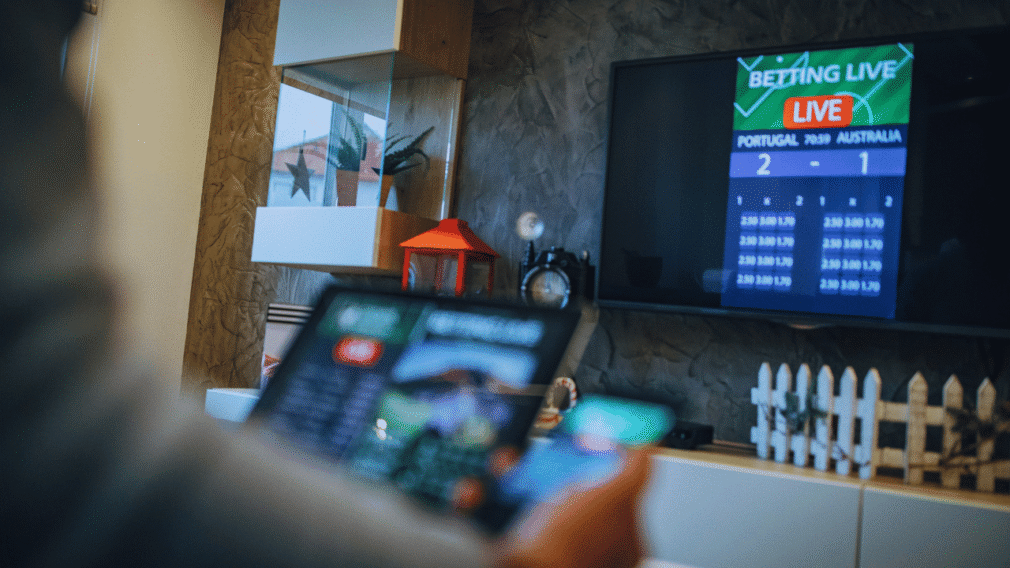Real-Time Riches: Understanding and Exploiting Live Betting Odds
Live betting, or in-play wagering, has fundamentally reshaped the sports betting ecosystem. By allowing wagers to be placed after a game has begun, live betting transforms the static pre-game line into a dynamic, real-time market that moves with every score, foul, and time-out. This adaptability offers informed bettors more opportunities to find value than ever before, but it demands speed, discipline, and an understanding of the algorithms that drive the odds.

Research indicates that while live markets carry a higher vigorish (vig) (often to higher than pre-game) the inherent volatility and human element in watching the game create temporary market inefficiencies that sharp bettors can exploit. This comprehensive guide dissects how live odds are calculated, reveals the advanced strategies for finding (Positive Expected Value) in real time, and highlights the critical psychological safeguards required for success.
The Mechanics of Real-Time Odds Fluctuation
Live betting odds are not set by human discretion alone; they are the result of sophisticated, AI-driven algorithms that process a continuous stream of in-game data.
How Algorithms Determine Value
The live odds you see flashing on your screen are calculated based on three primary inputs:
- Game State (The Hard Data): The core engine uses the current score, time remaining, and possession status to constantly update the Win Probability model. This is the foundation of the live moneyline and spread.
- Momentum and Metrics (The Soft Data): The system feeds on real-time advanced metrics like shot quality, time of possession, red zone efficiency (NFL), and offensive rating (NBA). If a team is “out-shooting” or dominating possession without scoring, the algorithm will shorten their odds to score next, anticipating a market correction.
- Betting Liability (The Market Data): If the public places a disproportionately high volume of money on one side, the algorithm will temporarily adjust the odds in the opposing direction to balance the book’s liability, often creating a brief window of mispriced value.
The Higher Cost of Speed (Vig Analysis)
Live betting markets typically feature a higher vig, ranging from to on common markets, compared to the standard pre-game .
- Pre-Game (): vig; requires win rate to break even.
- Live Prop (): vig; requires win rate to break even.
This higher cost is the bookmaker’s hedge against the volatility and the speed advantage a bettor might gain. To profit long-term, your ability to identify true value must be substantial enough to overcome this elevated rake.
Advanced Strategies: Hedging and Fading Overreaction
Live betting is most valuable when used as a strategic tool to capitalize on market overreaction or to protect pre-game investments.
1. Fading Early Overreactions
The single biggest inefficiency in live betting is the market’s tendency to overreact to early events.
NFL Example: A pre-game favorite concedes a “fluky” touchdown on the opening kickoff. The live spread often immediately flips to the favorite being an underdog (e.g., at ). An informed bettor understands that one play does not fundamentally change the long-term probability of the pre-game favorite winning, creating a valuable buy-low opportunity.
NBA Totals Strategy: If an NBA game starts with a frantic, high-scoring first quarter (e.g., combined points), the live Total (O/U) will spike dramatically. Bettors who anticipate that pace and shooting efficiency will regress to the mean can often lock in the Under at a substantially higher, undervalued total.
2. Live Hedging for Risk Management
Hedging is the use of a live bet to lock in a guaranteed profit or minimize losses on a pre-game wager.
- Profit Lock: If you bet on the underdog Moneyline at pre-game, and they jump out to a big lead, their live ML odds might shorten to . By wagering on the trailing favorite at , you guarantee a profit regardless of the final score.
- Loss Mitigation: If your pre-game favorite is trailing badly and their live ML has ballooned to , you can bet a small amount on the opposing team to minimize the total cash loss.
3. Exploiting Timing and Observation
Because algorithms rely on simple data points, they can lag when assessing tactical changes or intangible factors:
The Eye Test: Monitoring driver body language in F1, defensive formation shifts in soccer, or a basketball player’s sudden spike in Usage Rate following a teammate’s minor injury provides information the algorithm takes 10-30 seconds to process. Placing a bet during this window is known as “getting ahead of the line.”
Halftime Adjustments: Halftime is the best time for structured live betting. Analyzing first-half efficiency metrics against expectations and looking for significant coaching changes can reveal value in second-half spreads and totals.
Bet Types and Discipline for Sustainable Play
Live betting expands the available markets, but disciplined money management is the single most important factor for success.
Common Live Betting Markets
The Discipline of the Live Bettor
Bankroll Management: Due to the high risk and vig, maintain a strict unit size of to of your total bankroll for each live wager. Never chase losses or deviate from your unit size in the heat of the moment.
Line Shopping: Even with live odds, shop multiple mobile apps. A line difference of cents (e.g., vs. ) offers crucial long-term savings that add up over the high volume of live bets.
Cash-Out Feature: Use the Cash-Out feature judiciously. While it allows you to lock in a profit or mitigate a loss, the cash-out offer often comes at a price that favors the sportsbook. Only use it when the change in game probability is so significant that it justifies the embedded vig.
Set Loss Limits: Due to the risk of “tilt,” pre-determine a daily stop-loss limit (e.g., of your bankroll). If you hit that limit, immediately close the app and take a break.
Recommended
